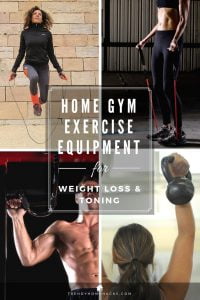How to Design the Perfect Home Gym is a topic that has become increasingly relevant as more people choose to work out at home. Whether you have a spacious basement or a small corner in your living room, creating a functional and motivating workout space is achievable. A well-designed home gym not only enhances your fitness routine but also adds value to your home.
In this guide, we’ll explore tips for designing a home gym in any space, regardless of size. From selecting the right equipment to optimizing storage, you’ll find practical advice to create a gym that suits your needs and inspires you to stay active.
How to Design the Perfect Home Gym: Tips for Every Space
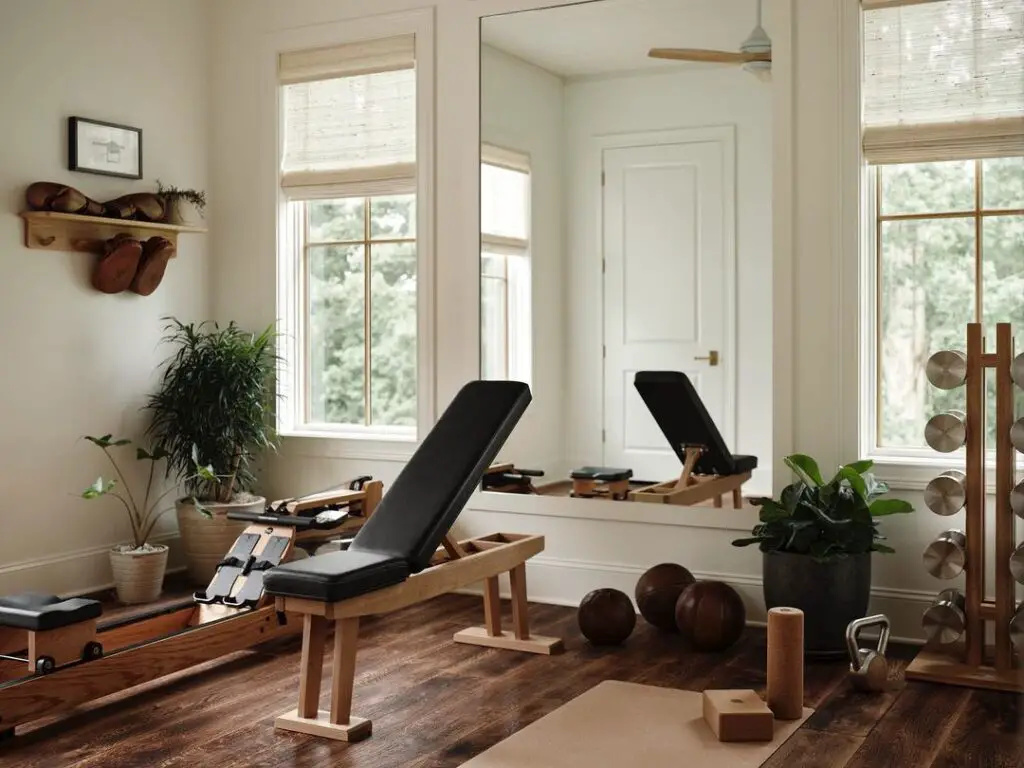
The benefits of a home gym extend beyond convenience. It offers privacy, flexibility, and the ability to personalize your workout environment. By designing the perfect home gym tailored to your space, you can create a motivating atmosphere that keeps you on track with your fitness goals.
How to Assess Your Space for a Home Gym
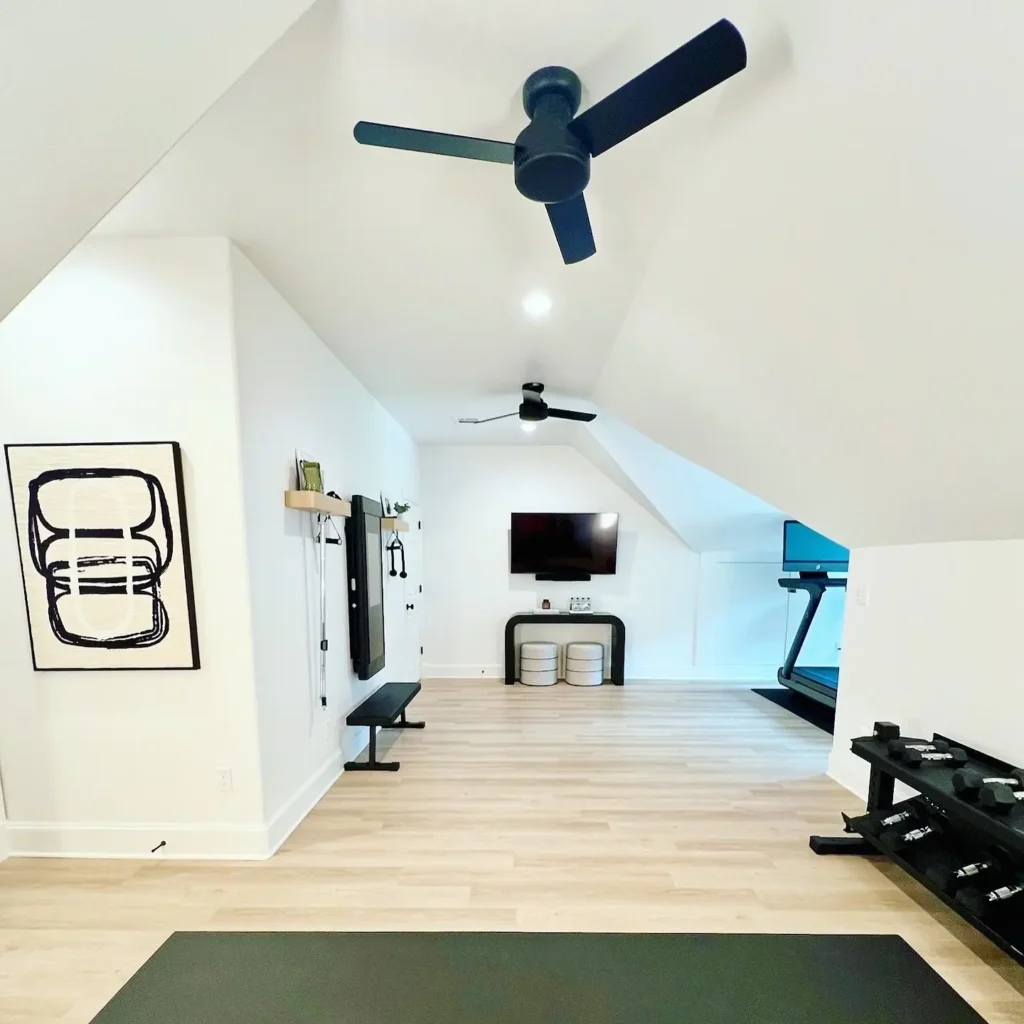
Measuring Your Space: Find the Best Spot for a Home Gym
The first step in designing the perfect home gym is assessing your available space. Start by measuring the area where you plan to set up your gym. Whether it’s a dedicated room, a garage, or just a corner of your living room, knowing the exact dimensions will help you choose the right equipment and layout.
For small spaces, consider using multifunctional equipment like resistance bands, foldable benches, or wall-mounted racks. These options maximize your workout area without cluttering the room. If you have a larger space, such as a basement or garage, you have more flexibility. You can incorporate bigger machines like treadmills, stationary bikes, or even create separate zones for different types of workouts.
Home Gym Noise Control and Flooring Solutions
Once you’ve determined the space for your home gym, think about noise control and flooring. Noise can be a concern, especially if you live in an apartment or have neighbors close by. Consider installing rubber mats or interlocking foam tiles to dampen sound and protect your floors. These options are not only functional but also add comfort to your workouts by providing cushioning underfoot.
Flooring is also essential for safety and durability. If you’re doing high-impact exercises or lifting weights, sturdy flooring is a must. Rubber flooring is an excellent choice for its durability and shock absorption. For those with smaller spaces, consider using portable mats that can be stored away when not in use.
Essential Home Gym Equipment for Every Space
Compact Home Gym Equipment for Small Spaces
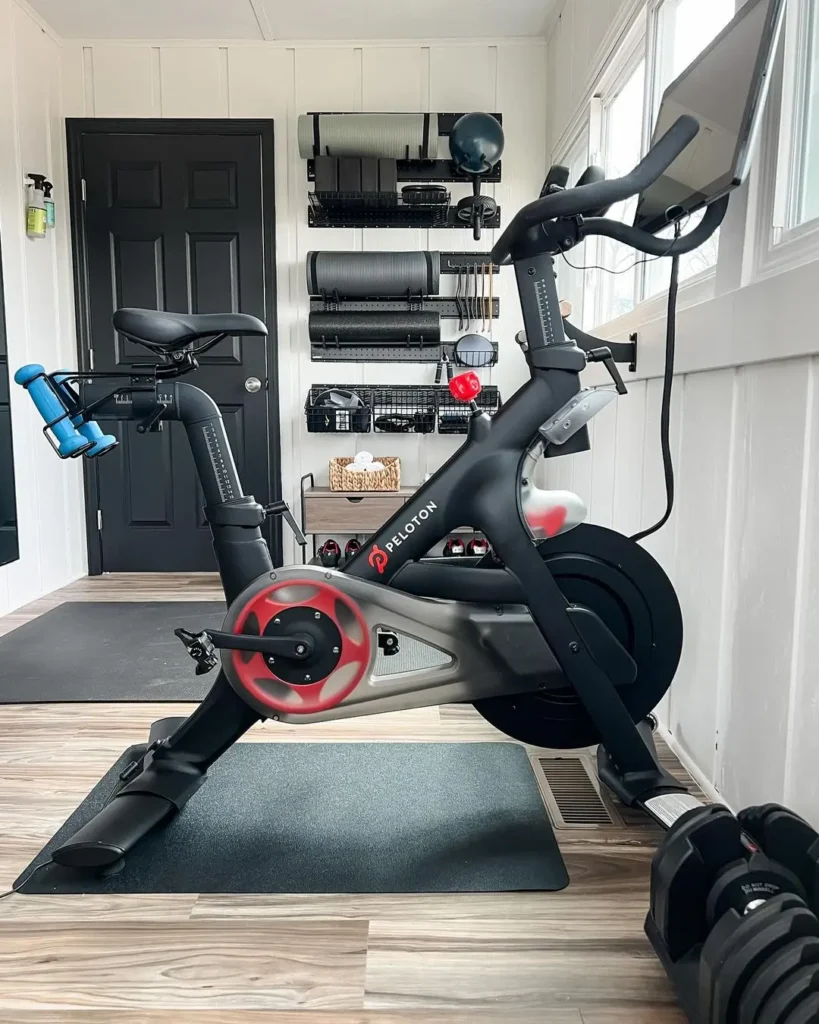
When designing a home gym in a small space, it’s crucial to choose equipment that is both compact and multifunctional. Look for items that serve multiple purposes without taking up much room. For example, adjustable dumbbells are an excellent choice—they replace a whole rack of weights with just one set. Resistance bands are another space-saving option, offering a full-body workout with minimal storage needs.
Vertical storage solutions are key in maximizing your space. Wall-mounted racks for weights, yoga mats, or resistance bands keep your equipment organized and off the floor. This not only saves space but also makes your home gym look neat and professional. Foldable equipment, such as a collapsible treadmill or a fold-up exercise bench, can be easily stored away when not in use, freeing up valuable floor space.
Best Home Gym Equipment for Larger Areas
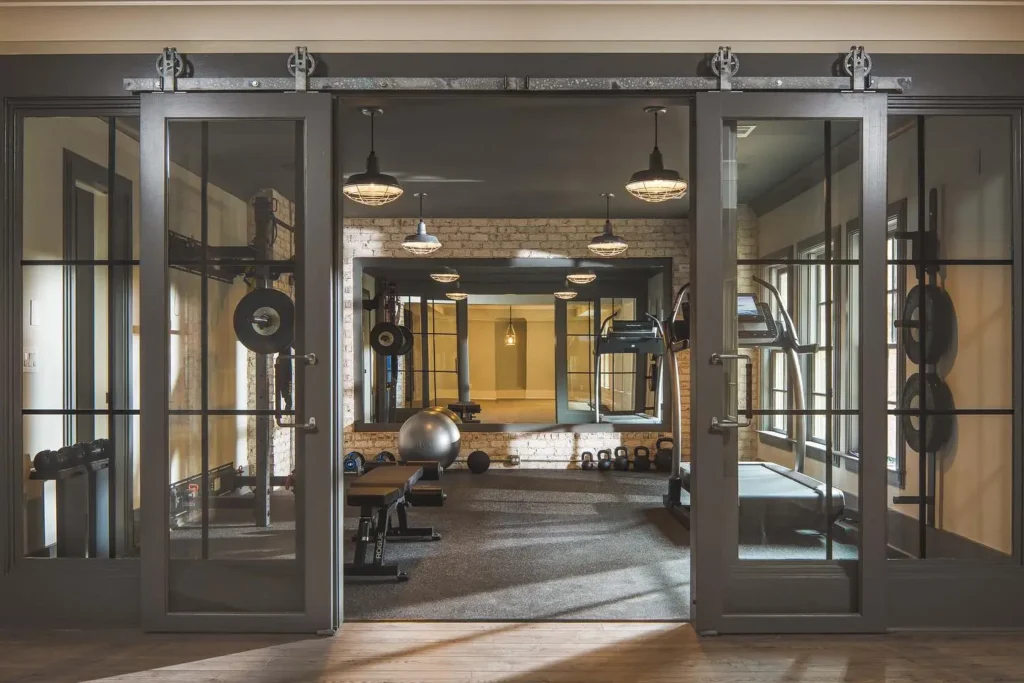
If you have a larger space to work with, you can create a more comprehensive home gym setup. Start by choosing key pieces of equipment that suit your fitness goals. For cardio, consider a treadmill, stationary bike, or rowing machine. These machines provide excellent cardiovascular workouts and are perfect for larger home gyms.
Strength training equipment, such as a squat rack, bench press, or cable machine, is ideal for building muscle and adding variety to your workouts. When arranging your gym, consider creating different zones for various activities. For example, designate one area for cardio, another for weightlifting, and a third for stretching or yoga. This zoning not only helps in organizing your equipment but also makes your workouts more efficient and enjoyable.
Designing a Home Gym with Style and Functionality
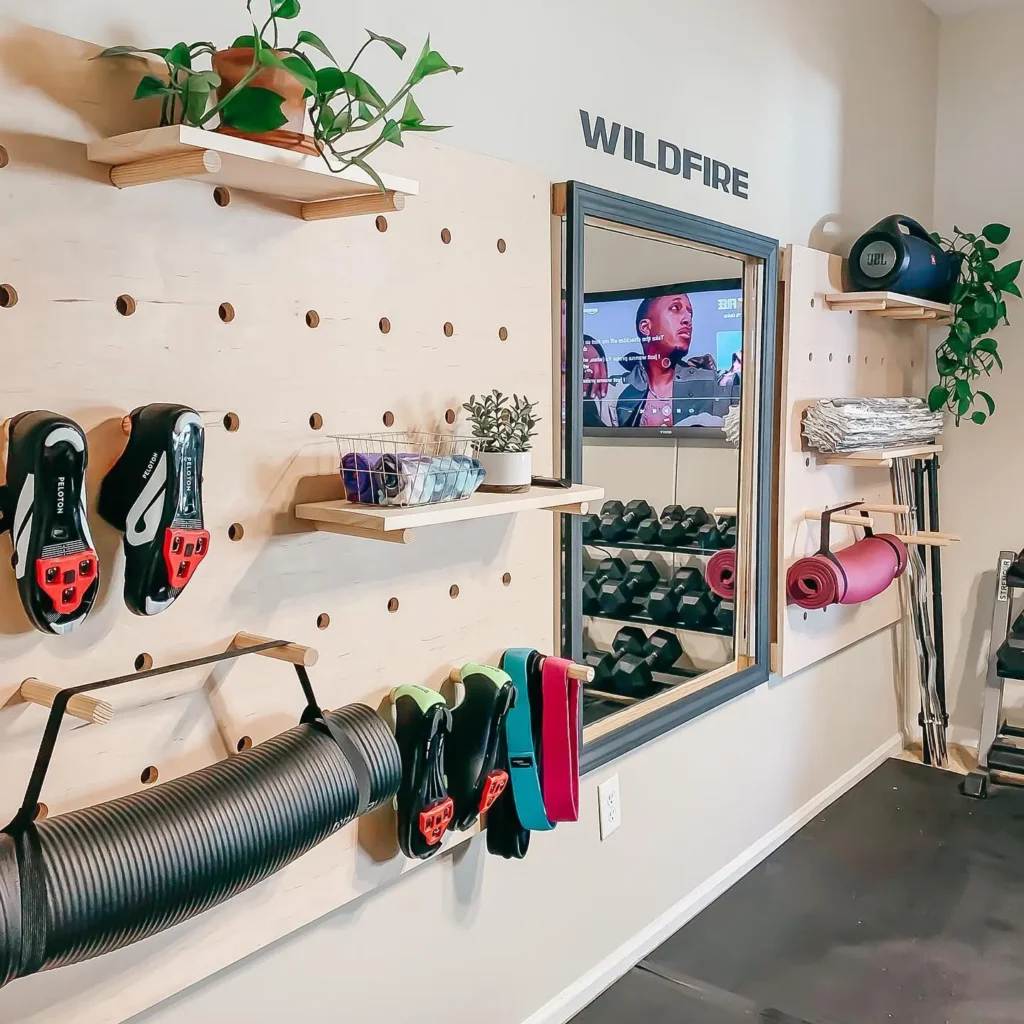
Creating an Inviting Home Gym Atmosphere
The atmosphere of your home gym plays a significant role in keeping you motivated and focused on your workouts. Start by choosing a color scheme that energizes you. Bright colors like blues, greens, or even bold reds can boost your energy levels, while softer tones like gray or light blue can create a calming environment.
Lighting is another critical factor. Natural light is ideal, so if possible, set up your gym near a window. If natural light is limited, consider using bright, adjustable lighting to keep the space well-lit and inviting. You can also add LED strip lights for a modern, vibrant feel. Mirrors are an excellent addition to any home gym, as they make the space feel larger and allow you to monitor your form during exercises.
How to Personalize Your Home Gym Space
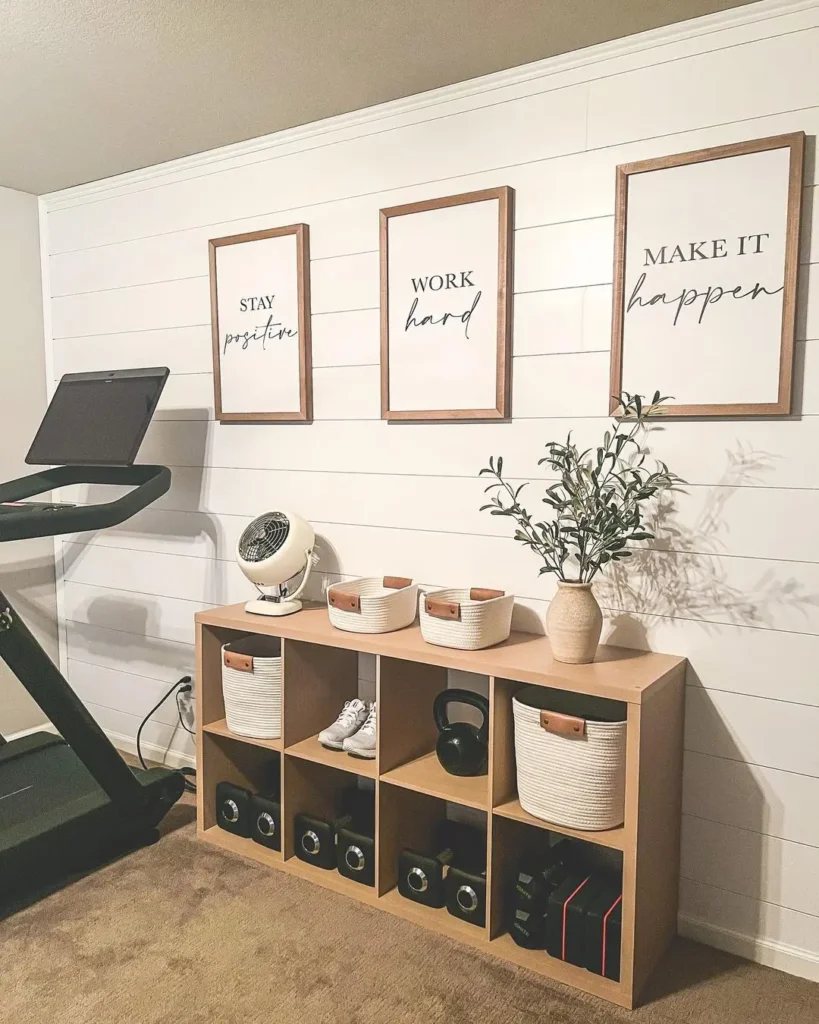
Personalizing your home gym can turn it into a place where you genuinely enjoy spending time. Start by adding decor that inspires you. Motivational quotes on the walls, framed photos, or artwork that resonates with your fitness goals can make the space uniquely yours. Incorporating plants can also add a touch of nature and create a more inviting atmosphere.
Tech integration is another way to enhance your home gym experience. Consider installing a sound system or smart speakers to play your favorite workout playlists. A wall-mounted TV can be great for streaming workout videos or watching shows while doing cardio. Additionally, integrating fitness trackers or smart mirrors can help you monitor your progress and stay on track with your goals.
Budget-Friendly Tips for Setting Up a Home Gym
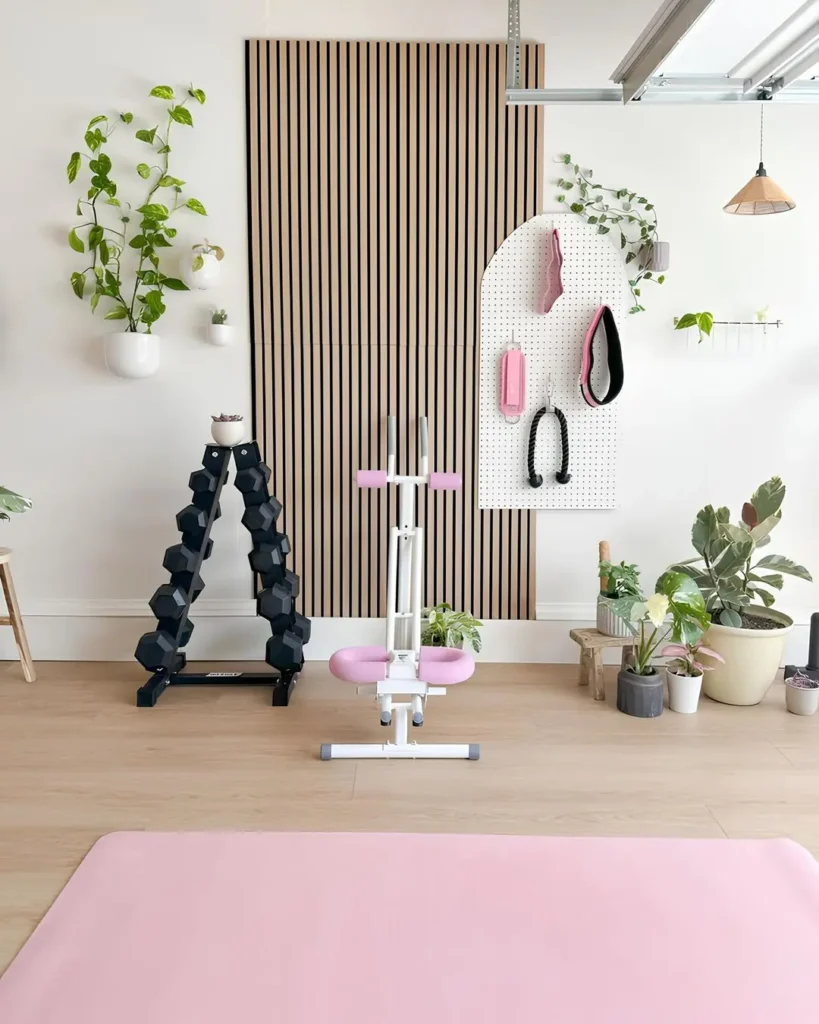
DIY Home Gym Solutions on a Budget
Building a home gym doesn’t have to be expensive. Numerous DIY solutions can help you create a functional and motivating workout space without costing a fortune. Start by looking around your home for items that can be repurposed as gym equipment. For instance, a sturdy chair can double as a support for bodyweight exercises, while filled water bottles or bags of rice can substitute for dumbbells.
You can also make your own equipment. For example, a sandbag can be crafted using a duffel bag filled with sand, providing a versatile tool for strength training. Another budget-friendly tip is to use a large towel for resistance training or stretching. With a little creativity, you can equip your home gym with essential tools without spending much money.
Shopping Smart for Home Gym Equipment
When it comes to purchasing equipment, shopping smart can significantly reduce costs. Start by researching online marketplaces, discount stores, and sales events for deals on new or lightly used equipment. Websites like Craigslist, Facebook Marketplace, or local garage sales can be gold mines for finding second-hand gym equipment at a fraction of the retail price.
Consider prioritizing your purchases based on your fitness goals and space. Begin with the essentials—like dumbbells, resistance bands, or a yoga mat—and expand your collection over time as your budget allows. Many online retailers also offer financing options or bundle deals that can help you stretch your budget further. Additionally, keep an eye out for seasonal sales, such as Black Friday or end-of-year clearance events, where you can snag quality equipment at discounted prices.
How to Maintain and Organize Your Home Gym
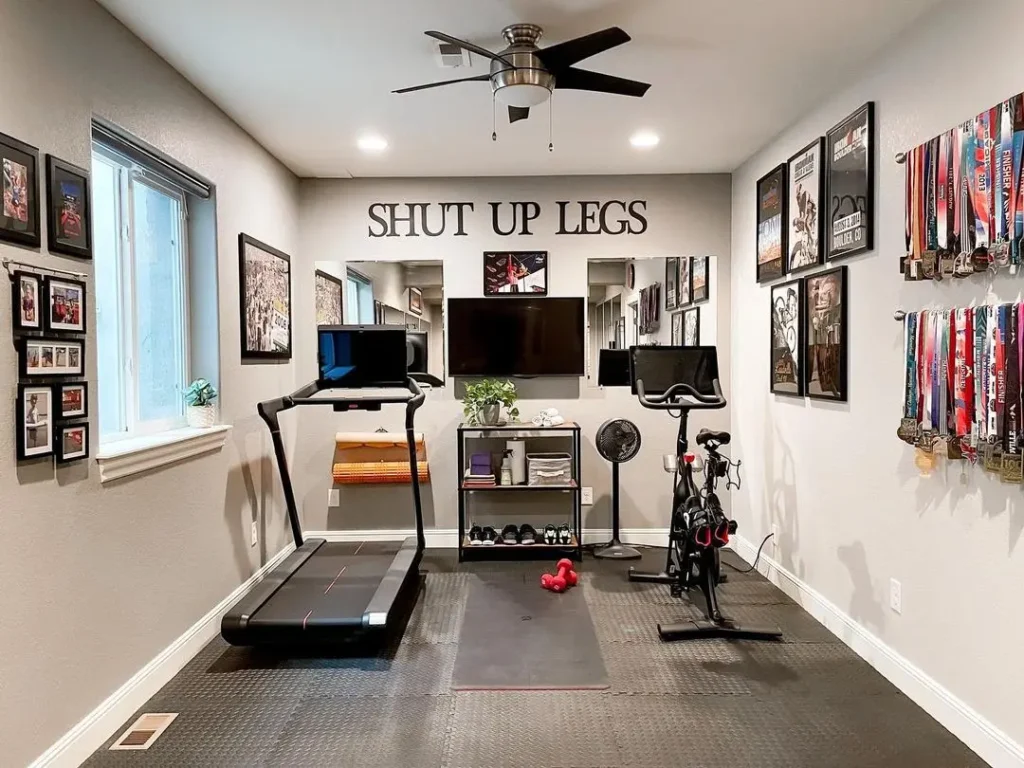
Keeping Your Home Gym Clean and Organized
Maintaining a clean and organized home gym is essential for both safety and motivation. A clutter-free space makes it easier to focus on your workouts and reduces the risk of accidents. Start by investing in storage solutions that suit your space. For example, use wall-mounted racks for storing weights, resistance bands, and other small equipment. This keeps items elevated and easily available.
If you have larger equipment, consider using bins or shelving units to organize smaller accessories like yoga blocks, towels, and workout gloves. Labeling these storage areas can help keep things tidy and ensure that everything has its place. Additionally, regularly wipe down your equipment with disinfectant wipes to remove sweat and prevent the buildup of germs. For flooring, vacuum or sweep regularly to keep the area free of dust and debris.
Staying Motivated in Your Home Gym Routine
A well-maintained gym is only effective if you stay motivated to use it. To keep your home gym routine exciting, consider setting up a workout calendar. This visual reminder can help you stay on track with your fitness goals and make it easier to establish a regular exercise routine. You can also switch up your workouts regularly to prevent boredom. Incorporating different types of exercises—like strength training, cardio, and yoga—keeps things fresh and challenges your body in new ways.
Another way to maintain motivation is by creating a workout playlist that energizes you. Music can be a powerful motivator, helping you push through tough workouts. Additionally, consider setting up a reward system for yourself. For instance, treat yourself to something special after completing a week of consistent workouts. This positive reinforcement can boost your enthusiasm and keep your routine on track.
Conclusion
Designing the perfect home gym, whether in a small apartment or a spacious basement, is all about thoughtful planning and creativity. By evaluating your space, choosing the right equipment, and adding personal touches, you can create a gym that meets your fitness needs while also inspiring you to stay active.
A well-designed home gym is an investment in your health and well-being, providing a convenient and motivating space to achieve your fitness goals.
There’s no better time than now to start designing your perfect home gym. Whether you’re just beginning your fitness journey or looking to upgrade your existing setup, taking the first step today can lead to lasting benefits. A personalized, well-organized gym space at home can make working out more enjoyable and accessible, helping you stay consistent with your routine and achieve your fitness goals.
Pin this post for later!
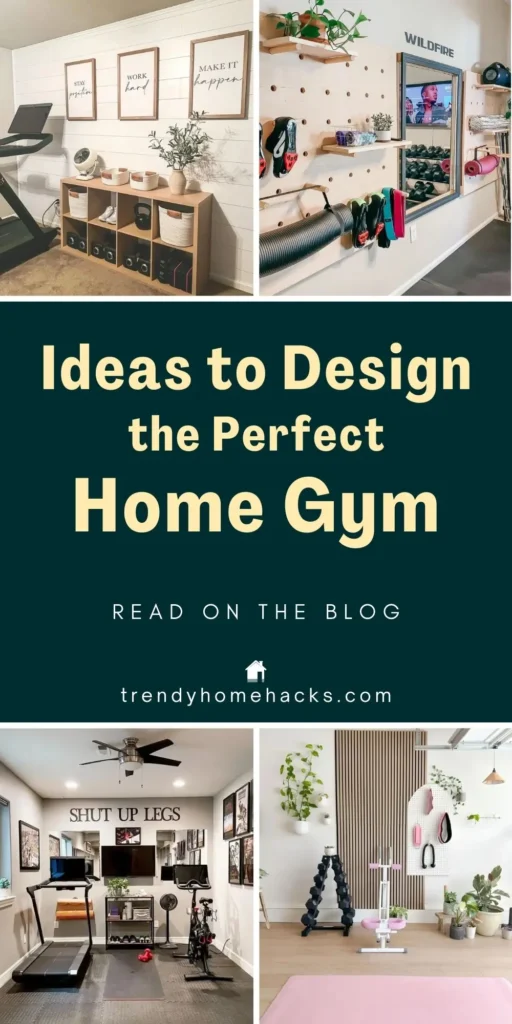
Frequently Asked Questions
1. What’s the Best Flooring for a Home Gym?
The best flooring for a home gym depends on your workout type and space. Rubber flooring is ideal for durability and shock absorption, especially for weightlifting. Foam tiles are great for lighter activities like yoga or Pilates and are easy to install and move.
2. How Can I Soundproof My Home Gym?
To reduce noise, try using rubber mats or interlocking foam tiles, which absorb sound and dampen vibrations. Adding thick rugs or carpeting to the room can also help dampen noise, especially in apartment settings. Additionally, wall hangings like heavy curtains or acoustic panels can further reduce sound transmission.
3. What Are the Most Space-Efficient Pieces of Equipment?
For small spaces, multifunctional equipment is key. Adjustable dumbbells, resistance bands, and foldable benches are excellent choices. Vertical storage solutions, like wall-mounted racks, help keep your gym organized without taking up floor space.
4. How Should I Maintain My Home Gym Equipment?
Regular maintenance is crucial for keeping your home gym equipment in top condition. Wipe down machines and weights after each use with disinfectant wipes to prevent the buildup of sweat and grime. Check moving parts periodically and lubricate as needed to ensure smooth operation. For items like yoga mats or towels, regular washing helps maintain cleanliness and extends their lifespan.

